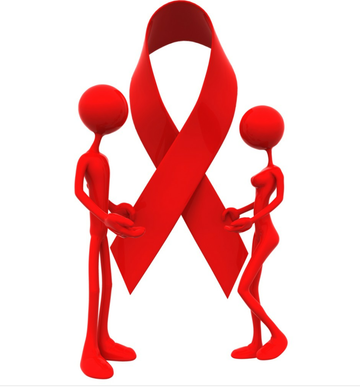
HIV symptoms can be light and easy to miss. Even if they don’t display any symptoms, an HIV-positive individual might still transfer the illness to others. This is the main reason why people should be aware of their HIV status. Women may be curious about the differences in HIV symptoms between men and women. Many HIV symptoms in men and women are the same, but not all.
What are the HIV/AIDS symptoms in women?
Some persons with HIV have no symptoms when they first get infected.Within a month or two of being exposed to the virus, some people cause fever, headache, weariness, and swollen lymph nodes.
More severe symptoms may take ten years or longer to manifest. The virus is active inside a person’s body and can be given to another person even if they are asymptomatic.
As one’s immune system deteriorates, one’s chances of being sick increase,a slew of issues emerge. Large lymph nodes or “swollen glands,” which can be enlarged for more than three months, are often the earliest signs of infection in many patients.
Other symptoms can months or years before the onset of AIDS include:
Here’s a rundown of eight common signs and symptoms, including several that are unique to women.
1. Skin rashes and skin sores
2. Swollen glands
3. Infections
4. Fever and night sweats
5. Menstrual changes
6. Increased outbreaks of other sexually transmitted infections (STIs)
7. Pelvic inflammatory disease (PID)
8. Advanced symptoms of HIV and AIDS
1. Skin Rashes And Skin Sores
The majority of HIV patients experience skin problems. Rash is a common symptom of HIV, and there are many different types of skin rashes associated with the condition. It’s possible that they’re an HIV symptom or the result of another infection or ailment.If you get a rash, it’s better to have a healthcare professional review over one’s medical history.
HIV-positive people may develop sores or lesions on their mouths, genitals, and anus.Skin problems may be less severe if the appropriate medication is used.
2. Swollen Glands
Lymph nodes, which are part of the immune system, save immune cells and filter germs to fight infections.
It’s the first indicator that you’ve become HIV-positive. Swollen glands in HIV-positive persons might last for months.
3. Infections
HIV weakens the immune system’s ability to fight germs, making it easier for opportunistic infections (OIs) to take hold.
Among them are Pneumonia, TB, and oral or vaginal candidiasis are among them., tuberculosis, and oral or vaginal candidiasis. In HIV-positive women, yeast infections (a kind of candidiasis) and bacterial infections are more prevalent and difficult to treat.
HIV-positive persons are more likely to contract infections in the following areas:
Like Skin, eyes, lungs, kidneys, gastrointestinal tract, and brain . HIV makes common illnesses like the flu more challenging.
Taking antiretroviral drugs and attaining viral suppression, on the other hand, greatly reduces the likelihood of developing OIs. Frequent handwashing can also aid in the prevention of some of these disorders and associated complications.
4. Fever And Night Sweats
In HIV patients, long spells of low-grade fever are prevalent.Even if the cause isn’t always obvious, a fever occurs when something is wrong with the body.Fever can be accompanied by nocturnal sweats, which can make sleeping difficult.
5. Menstrual Changes
The menstrual cycle of HIV-positive women can be affected.Their periods may be lighter or heavier than usual, or they may not have any at all. HIV-positive women may experience more severe premenstrual symptoms.
6. Increased Outbreaks Of Other Sexually Transmitted Infections (STIs)
Patients who already have another sexually transmitted infection may experience worsening symptoms as a result of HIV (STI).
In HIV patients, the human papillomavirus (HPV), which causes genital warts, is more active.. HIV can cause more frequent — and more acute — outbreaks in genital herpes patients.
7. Pelvic Inflammatory Disease (PID)
Pelvic inflammatory disease (PID) is an infection of the uterus, fallopian tubes, and ovaries.In HIV-positive women, PID may be difficult to cure. Symptoms can last longer or recur more frequently than usual.
8. Advanced Symptoms Of HIV And AIDS
Symptoms of HIV as it advances include:
- constipation, nausea, and vomiting
- slimming down
- horrible throbbing headache
- joint discomfort
- muscular pains
- difficulty swallowing, shortness of breath, persistent cough
In its latter phases, HIV can cause the following complications:
Short-Term Memory Loss Mental Confusion Coma
Acute Immune Deficiency Syndrome is the most advanced stage of HIV infection (AIDS).At this point, the immune system is severely depleted, making battling infections very difficult. AIDS is diagnosed when a person’s CD4 cell count falls below 200 cells per cubic millimetre of blood (mm3).
Reducing The Risk Of HIV
HIV is spread from one person to the next person by fluids (saliva and blood). This can occur as a result of drug users sharing needles or during sexual activity.
Not sharing needles when using injected drugs taking (PrEP); (USPSTF) recommends this preventive medication for people with known risk factors for HIV not douching after sex; If you’re not in a monogamous relationship, normal balance of bacteria and yeast in the vaginal canal may be disrupted, worsening an infection or increasing your risk of contracting HIV and STDs.
Women who do not have HIV but have HIV-positive partners are not at danger of contracting the virus if their partners take their HIV medicine on a regular basis and achieve viral suppression, as long as they continue to wear a condom.
HIV-positive persons with a viral load of less than 200 copies per millilitre (mL) of blood have “virtually no danger” of spreading the virus, according to the Centers for Disease Control and Prevention (CDC)Trusted Source.
Understanding the risk factors is crucial to HIV prevention. You may learn more about preventing HIV and other sexually transmitted infections by visiting this page.
The Importance Of Getting Tested
The possibility of HIV and have any of the symptoms listed above, getting tested is a great first step. It’s the only way to determine whether or not someone has HIV for sure.
The CDC (Centers for Disease Control and Prevention) is a trustworthy source of information.
That everyone between the ages of 13 and 64 get tested for HIV at least once, reduce risk. If someone has known risk factors, it’s a better idea to have them examined every year.
Testing is simple and can be done in the privacy of a medical provider’s office, at home, or at a testing facility. Local public health departments, as well as websites like HIV.gov, provide information on where to get tested.
Message from Bliss pads
Consult your doctor if your HIV test came negative but you are still experiencing symptoms. Even if you don’t have HIV, symptoms like a rash can indicate a major medical problem.
If your HIV test results are positive, a healthcare provider can assist you in developing a treatment plan. The infection may be controlled with the right treatment, and recent advancements have significantly enhanced the life expectancy of HIV patients.
Consider contacting one of the organizations dedicated to helping HIV-positive women and girls:
The AIDS Positive Women’s Network and the Global Coalition on Women are both based in the United States.
WORLD OF THE WELL PROJECT (Women Organized to Respond to Life-threatening Diseases)





